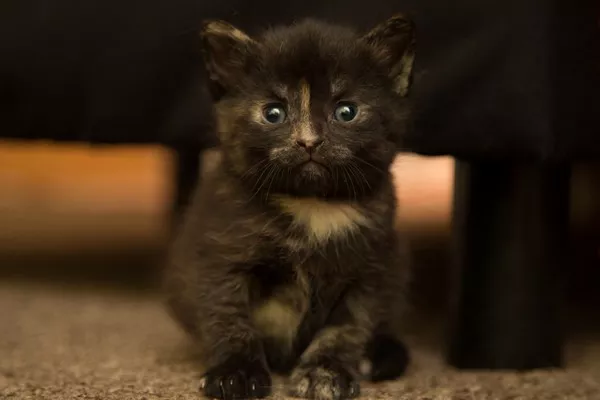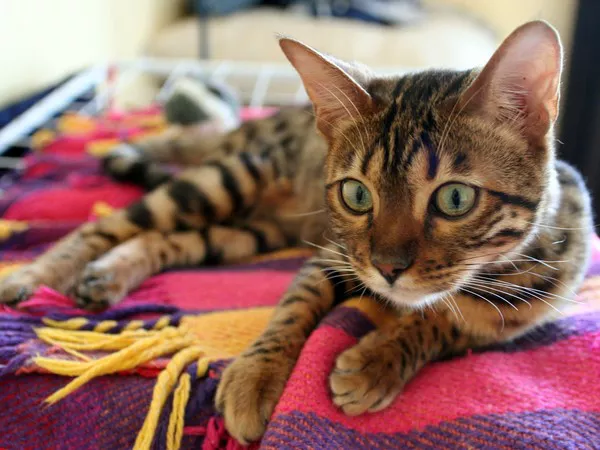Cat feeding is a crucial aspect of responsible pet ownership, and it plays a significant role in ensuring your kitten grows into a healthy and well-adjusted adult cat. Free feeding, or leaving food out for kittens at all times, is a feeding method that some cat owners use, but it isn’t always the most appropriate for every stage of a kitten’s development. Understanding when and how to transition from free feeding to scheduled meals is important for your kitten’s physical and emotional well-being. This article will explore the considerations you should make when deciding the right time to stop free feeding your kitten and the best practices for feeding your cat.
What is Free Feeding?
Free feeding refers to the practice of allowing your kitten or adult cat to eat as much as they want, whenever they want. This method typically involves leaving food out all day, giving the cat unlimited access. Free feeding works well for some adult cats, particularly those who are not prone to overeating. However, it’s important to note that kittens have different nutritional needs and developmental stages that may require a more structured feeding schedule.
Understanding the Nutritional Needs of Kittens
Before we dive into when to stop free feeding kittens, it’s important to understand why free feeding may or may not be appropriate for kittens during certain phases of their development.
Kittens undergo rapid growth during the first year of their life. Their dietary needs change constantly as they grow, so it’s essential to provide them with a balanced, high-quality kitten food that supports their growth and development. Unlike adult cats, kittens have higher energy requirements and need more frequent meals throughout the day. This is because they have small stomachs and fast metabolisms, making it challenging to go long periods without food.
As kittens grow older and their metabolism slows, they will be able to tolerate less frequent meals and larger portion sizes. This gradual shift in dietary needs is when the transition from free feeding to a more structured feeding schedule should be considered.
When Should You Stop Free Feeding Your Kitten?
The decision to stop free feeding depends on various factors, including your kitten’s age, activity level, and health. Below is a guide to help you determine the right time to stop free feeding and begin offering scheduled meals.
1. The First Few Weeks (Birth to 8 Weeks)
During the first few weeks of life, kittens should be nursing from their mother or receiving kitten milk replacer if the mother is unavailable. At this stage, kittens need constant access to nutrition, so free feeding is a natural approach. However, once kittens reach around 4 weeks old, they will start transitioning to solid food.
2. Weaning Phase (Around 4 to 8 Weeks)
When your kitten is around 4 weeks old, they will begin to explore solid foods. At this stage, it’s important to offer them wet kitten food in small, frequent meals to encourage eating and proper growth. Free feeding is still acceptable during this phase as they are adjusting to their new diet.
By the time they reach 8 weeks, kittens should be eating solid food regularly, though they may still require 3 to 4 small meals a day to support their energy needs. During this period, you may want to continue free feeding, especially if your kitten has not yet fully adjusted to eating on a schedule. However, keep in mind that this stage is the precursor to transitioning to more structured feeding habits.
3. 8 to 12 Weeks: A Transition Period
Between 8 and 12 weeks of age, kittens are growing rapidly, and their nutritional needs are increasing. During this phase, kittens may begin to settle into a more consistent eating routine. It’s a good time to begin thinking about transitioning away from free feeding, as this is when you can start introducing a more regular meal schedule.
While kittens will still require several meals a day, free feeding can lead to overeating, which could result in unhealthy weight gain. This is especially true if your kitten is prone to self-regulating their food intake in a manner that leads to overindulgence. Starting to feed your kitten at set times will help you keep track of their food intake, reduce the risk of obesity, and encourage healthy eating habits.
4. 12 Weeks and Older: Shifting to Structured Meals
By the time your kitten reaches 12 weeks, their diet should consist mainly of high-quality kitten food that meets their nutritional requirements. At this age, you can begin reducing the frequency of meals, transitioning them to a more structured feeding schedule.
Kittens between 3 and 6 months old typically need to eat three meals a day. However, the portions can be increased as they grow, which may help them feel fuller for longer periods, reducing the need for frequent meals. Starting to stop free feeding at this age helps regulate your kitten’s appetite and makes it easier to monitor their health.
5. 6 Months and Beyond: Moving Toward Adult Feeding Habits
As your kitten reaches 6 months old, you should gradually transition them to a feeding schedule designed for adult cats. By this time, you can start feeding them twice a day, offering more substantial meals at regular intervals. This will help prevent the overfeeding that can occur with free feeding and ensure that your kitten maintains a healthy weight.
At 6 months, it’s generally appropriate to stop free feeding altogether and stick to a consistent feeding schedule that meets their energy needs while avoiding the risks associated with overeating.
Why Should You Stop Free Feeding Your Kitten?
Stopping free feeding your kitten is essential for several reasons:
Preventing Obesity: Cats that are allowed to free feed often gain weight because they eat more than necessary. Kittens, in particular, may overeat without the proper guidance on portion control. Overeating during kittenhood can lead to obesity and associated health problems later in life.
Encouraging Healthy Eating Habits: By transitioning to scheduled meals, you teach your kitten to eat at specific times and avoid eating out of boredom or habit. This is an important skill for managing their diet and maintaining a healthy weight in adulthood.
Controlling Portion Sizes: A scheduled feeding routine allows you to monitor and adjust portion sizes based on your kitten’s growth. This ensures they get the right amount of food for their size and activity level.
Establishing a Routine: Cats are creatures of habit, and having set feeding times helps create a sense of security for your kitten. A predictable feeding schedule can also improve your kitten’s overall behavior and reduce anxiety.
Better Digestive Health: Scheduled feeding allows you to ensure that your kitten is not eating too quickly, which can lead to digestive issues. With free feeding, your kitten may eat too fast without having a chance to digest their food properly.
How to Transition from Free Feeding to Scheduled Meals
Transitioning away from free feeding can be a gradual process that allows your kitten to adjust comfortably. Here are some steps to help with the transition:
Gradually Reduce the Amount of Food: Start by reducing the amount of food you leave out for free feeding. Offer smaller portions at specific times throughout the day, gradually moving toward a set feeding schedule.
Establish a Routine: Feed your kitten at the same time each day, making sure to keep meals consistent. This helps them adapt to regular mealtimes and encourages good eating habits.
Monitor Food Intake: Keep track of how much your kitten eats at each meal. This will help you determine if you need to adjust portion sizes or meal frequency. It also allows you to identify any changes in appetite or behavior, which could indicate health issues.
Use Interactive Feeding Toys: If your kitten tends to eat too quickly, consider using interactive feeding toys or puzzle feeders. These toys encourage slower eating and mental stimulation, which can help improve digestion and prevent overeating.
Ensure Fresh Water Is Available: Always make sure your kitten has access to fresh water throughout the day. This is important for hydration, particularly as you reduce the amount of food left out.
Monitor Weight and Growth: Regularly check your kitten’s weight and growth to ensure they are maintaining a healthy body condition. If you notice any significant weight changes, consult with your veterinarian for guidance on portion sizes and meal timing.
Conclusion
Deciding when to stop free feeding your kitten is an important step in ensuring they grow into a healthy adult cat. The transition to scheduled feeding should begin at around 8 to 12 weeks of age, with full implementation around 6 months. By doing so, you can help your kitten avoid obesity, develop healthy eating habits, and ensure their overall well-being.
As with all aspects of cat feeding, it’s important to consider your kitten’s individual needs and consult with a veterinarian if you have any concerns about their diet or feeding routine. By providing your kitten with the right food at the right times, you can set them up for a lifetime of health and happiness.
Related Topics



























